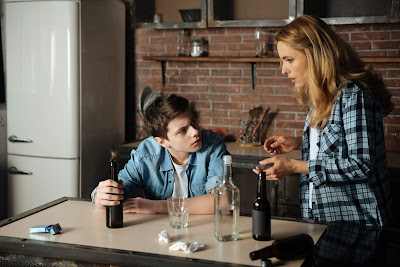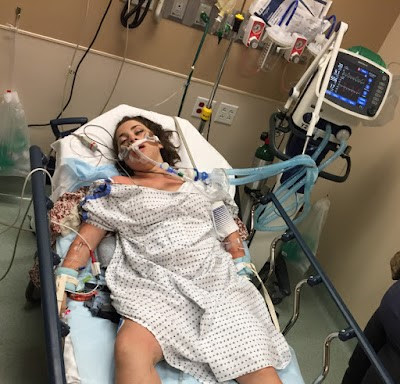What are cannabis 'edibles' and should Australian parents be worried?
Just over 18 months ago I was contacted by a school that had recently had a nasty experience with 'edibles'. How the story didn't make the papers I will never know but a Year 7 student had managed to access a packet of cannabis gummy bears from an older sibling, took them to school and then handed them out to a few of his friends. The 12-year-olds, completely unprepared for the experience, became quite unwell and were rushed to hospital with teachers believing it was a case of food poisoning. They were finally able to work out what had actually happened by finding the discarded packaging identifying what the children had consumed. The school wanted to know if I could help them with some information about this product and whether I knew of other Australian schools that had experienced a similar problem.
Gummy bears are one of the most popular 'cannabis edibles' available today. They, along with thousands of other products are part of a billion-dollar industry that continues to grow steadily. Research suggests that in those North American states where the drug is legal, edibles now account for at least 10% of all cannabis sales. So what are edibles and what do Australian parents of teens need to know about them?
Cannabis (marijuana, weed, grass, pot, ganja, yandi) comes in a number of forms, all containing a number of active compounds known as cannabinoids. The most well-known of these is delta-9 tetrahydro-cannabinol, commonly known as THC. This is the part of the plant that gives the 'high'. The different forms can be smoked, eaten or vaporised. A cannabis edible is a food product that contains THC or one or more other cannabinoids. Although the term edible can refer to a food or drink, a cannabis-infused drink is often called a 'liquid edible' or a 'drinkable'.
If you experimented with cannabis during your teens or early 20s but chose not to smoke the drug, you may have tried a brownie (often referred to as 'hash brownies' or spacecakes') as an alternative way of getting 'stoned'. Although brownies are often thought of as the original 'edible', consuming cannabis in food and drink has an extremely long history dating back to the 10th century in India. We're now talking about something completely different, however, with edibles being mass produced, with products such as chocolate, lollies, cookies, energy drinks and spreads available. You can now even legally purchase THC-infused alcoholic beverages, such as vodka, wine and beer in some parts of the world and there are also companies manufacturing and selling THC-infused water, that's right - water that gets you stoned!
It is important to note that not all edibles are the same, with basically two types being available:
- THC edibles (THC is the major psychoactive component of cannabis) - most likely to be consumed for the purpose of getting 'high'
- CBD edibles (CBD is a non-intoxicating compound in cannabis found to have a range of beneficial properties including anti-convulsant, anti-spasmodic, anti-psychotic and neuroprotective qualities, making it potentially useful in managing medical conditions such as seizures and pain) - these do not cause the user to get 'stoned' and are used by those interested in the medicinal benefits of cannabis
Rarely a week goes without at least one young person trying to test me and see if I actually do know what I'm talking about by asking me "What do you know about edibles?" The older students are usually interested in whether edibles can be detected by sniffer dogs or if they will be picked up in a roadside drug test, i.e., they are looking for alternative ways to use cannabis and not get into trouble with the law. It is quite clear that some are accessing these products and, like so many others today, it is usually via social media.
As far as I'm aware there is no data on the prevalence of use of edibles in Australia and there is no information from Australian Customs about seizures of such products at the border. If they are buying them online from overseas it doesn't appear that significant amounts are being picked up by authorities. There have been a few media reports around the issue, including one in September 2020 when a young Sydney couple were charged after police found 3.7 kilograms of cannabis-infused jelly lollies, chocolate and other baked goods in their home. They were apparently producing the products themselves and selling them via a website.
So are there any particular risks associated with edibles? Firstly, and most importantly, cannabis edibles that contain THC are considered the same as any cannabis containing product and are illegal in most states and territories in Australia. The exception is the ACT where in January 2020 it became legal to possess a small amount of cannabis (50g) that was homegrown. So, theoretically, if you were to grow your own cannabis and add it to food in your own home for your own consumption, that would be legal. Interestingly however, the ACT Government made it clear that the new laws would not make it legal to purchase THC edibles online and bring them into the territory.
The other issue around edibles is the different onset of effect. When cannabis is smoked the effects are almost immediate. As a result, the person using the drug can choose to smoke more, moderate or cease their use depending on the desired effect. Edibles take far longer to take effect because food is absorbed into the bloodstream through the liver. When consumed orally, cannabis can take anywhere from 1-3 hours to feel the full effects. Because of this delay some end up eating more of the product believing that it isn't working. This is more likely to occur in naive users and can lead to over-consumption, causing problems such as severe anxiety, panic attacks and nausea.
Unfortunately, even though the edibles industry is growing quickly, it is poorly regulated and as a result, it is often difficult to reliably know how much THC is contained in these products. Studies have found highly variable amounts of THC in products contained in the same packaging. In Canada, where the drug was legalised in 2017, edibles did not become legally available for another two years as the government attempted to put measures into place to regulate what would eventually go out into the marketplace. Strict packaging and labelling requirements and, more importantly, limits on THC content, however, have led some users to avoid these regulated products and be more likely to purchase 'black market' edibles that are still available that are more likely to provide the effect they are after.
So should Australian parents be concerned about edibles? Firstly, let's not forget that edibles are nothing new, hash brownies are likely to have been consumed by a significant proportion of the more than one-third of Australians who have ever tried cannabis in their lifetime. Also, edibles will continue to play an important role in the medicinal cannabis area, with evidence showing older people, in particular, who could possibly benefit from using the drug being more likely to do so when it does not need to be smoked, i.e., they prefer consuming the drug orally rather than smoking it.
That said, the commercialisation and mass production of THC-infused food and drinks is something that all parents need to be aware of. Edibles are not just brownies anymore. A huge range of products are now available online (if you know where to look) and are without a doubt being imported into the country by some, including teens, and then being 'on-sold' to others. Are they ever likely to be a significant problem in this country in relation to young people? I highly doubt it but being aware that these products are out there and becoming an increasingly popular part of the cannabis market where the drug is now legal is important.




Comments
Post a Comment